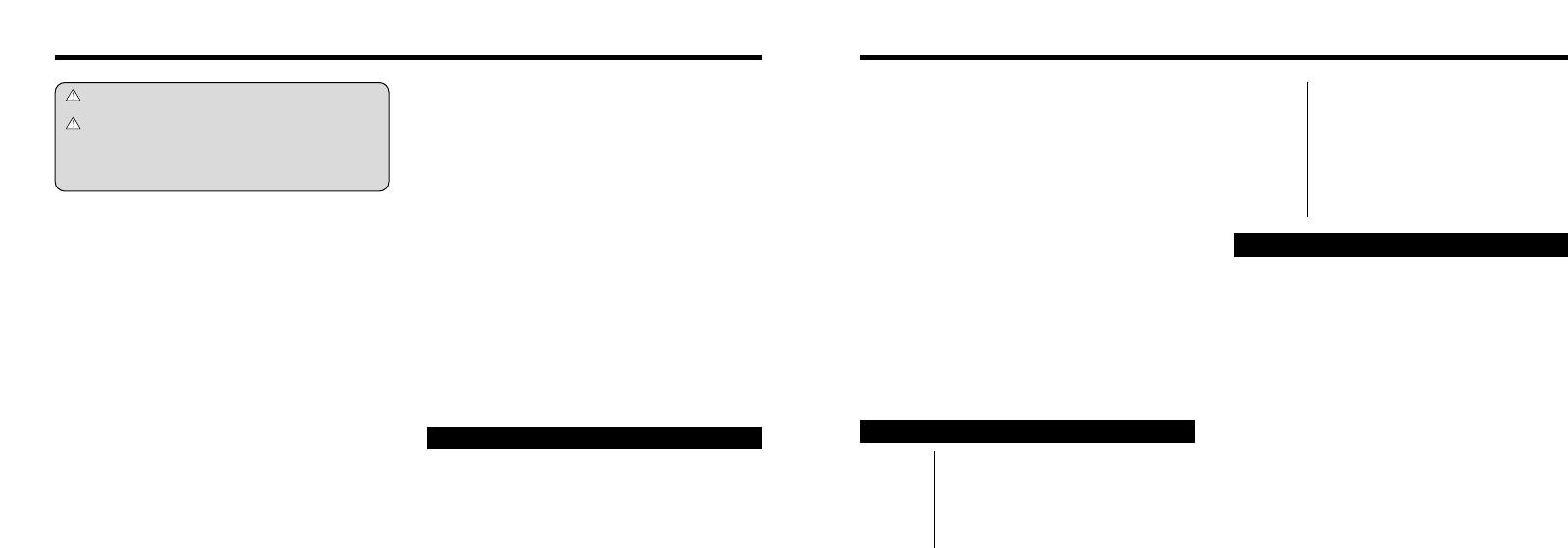
99
Always use the AC-3V AC Power Adapter AC-3V (sold
separately) with the FinePix40i Digital Camera.
The use of an AC power adapter other than the AC-3V
could result in damage to your camera.
● Ensure that you do not touch the contact areas on the
AC power adapter against any other metal object as this
could cause a short circuit.
● Do not plug the AC power adapter into the DIGITAL
socket as this could damage your camera.
● Do not plug in the AC power adapter while you are
operating the camera using batteries. Switch the camera
off first.
● Do not load the batteries while you are operating the
camera using the AC power adapter. Switch the camera
off first.
● If you disconnect the AC power adapter when there are
no batteries in the camera, the date and time settings will
be lost and must be reset.
Notes on Using the AC Power Adapter
BC-NH Battery Charger Specifications
Rated input
Input capacity
Rated output
Applicable
batteries
charger during use. This is normal and does not indicate
a fault.
● Do not use the battery charger to recharge batteries
other than Fujifilm HR-AA Ni-MH batteries or Fujifilm KR-
AA Ni-Cd batteries.
● The battery charger could cause interference if placed
close to a radio during charging. In this event, move the
radio and charger further apart.
● Do not touch the connections or contact points on
rechargeable batteries with other metal objects as this
can cause a short circuit.
●
Do not leave the battery charger in the following locations.
Locations subject to strong vibrations, in very dusty
locations, or in locations with very high humidity or high
temperatures, such as close to a heating appliance or in
direct sunlight.
●
The battery charger accepts input voltages of 100-240 V AC
at 50 or 60 Hz and can be used outside Japan. However,
because the shapes of power sockets vary by country and
by region, an appropriate plug adapter is also required for
each country. Consult your travel agent for details.
100-240 V AC, 50/60 Hz
4 VA at 100 V AC, 5VA at 240 V AC
1.2 V DC, 130 mA × 2
FUJIFILM HR-3UF (Ni-MH, 1500 mAH or
1600 mAH)
FUJIFILM KR-3UF (Ni-Cd, 1000 mAH)
98
If any liquid at all leaks from the batteries, wipe the battery
compartment thoroughly and then load new batteries.
I
f any battery fluid comes into contact with your hands or
clothing, flush the area thoroughly with water. Note that battery
fluid can cause loss of eyesight if it gets in your eyes. If this
occurs, do not rub your eyes. Flush the fluid out with clean water
and contact your physician for treatment.
■Disposing of Batteries
When disposing of batteries, do so in accordance with your
local waste disposal regulations.
■Notes on Small Rechargeable Batteries (Ni-MH
or Ni-Cd batteries)
● Always use the special battery charger to charge AA-size
Ni-MH or Ni-Cd batteries. Charge the batteries as
described in the instructions provided with the battery
charger.
● Do not use the battery charger to charge batteries other
than those specified for use with the charger.
● Note that the batteries may feel warm immediately after
being charged.
● Ni-MH and Ni-Cd batteries are not charged at shipment.
Be sure to charge the batteries before using them.
● The camera mechanism is such that it draws a minute
amount of current even when the camera is switched off.
Take particular care not to leave Ni-MH or Ni-Cd
batteries in the camera for a long period of time as they
can become excessively discharged and no longer be
useable even when charged.
● Ni-MH and Ni-Cd batteries self-discharge even when not
used. Always charge Ni-MH and Ni-Cd batteries before
using them. If the time for which a battery provides power
shortens markedly when it has been correctly charged,
this indicates that the battery has reached the end of its
effective life and should be replaced.
● Soiling (fingerprints, etc) on the terminals of Ni-MH
batteries can greatly reduce the number of available
shots. When this occurs, clean the terminals carefully
with a soft dry cloth. Then use up the remaining charge
in the batteries and recharge them.
●
Newly purchased batteries or batteries that have been left
unused for an extended period may not be fully charged.
(This is indicated by the immediate display of the battery
low warning or a low number of available shots.) This is a
normal characteristic of the batteries and does not indicate
a fault. Repeatedly charging and using the batteries 3 or 4
times will restore them to a normal condition.
● If you recharge Ni-MH or Ni-Cd batteries before they are
fully depleted, this results in the “memory effect”*, which
causes the battery low warning to appear sooner. To
restore the batteries to their normal condition, use up all
the charge in the batteries before recharging them.
● Rechargeable batteries and the battery charger itself will
become warm due to the power stored inside the
batteries. This is normal and does not indicate a fault.
Wherever possible, use the battery charger in a well-
ventilated location.
● There may be vibration noises from inside the battery
Notes on the Power Supply
Notes on Using the Battery Charger
Charging
time
Dimensions
Mass (Weight)
Operating
temperatures
HR-3UF (1500 mAH): Approx. 12 hours
HR-3UF (1600 mAH): Approx. 13 hours
KR-3UF (1000 mAH): Approx. 8 hours
86 mm × 68 mm × 24.6 mm
(3.4 in. × 2.7 in. × 1 in.) (L × W × D)
Approx. 80g (2.8 oz) (excluding batteries)
0°C to + 40°C (+ 32°F to + 104°F)


















